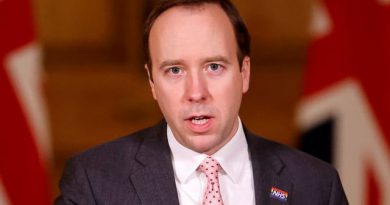Iran bans journalists from reporting the on-going protests
by Niloufar Rostami
Iranians must wait and see whether, in the coming days, newspapers and news agencies will continue to keep silent about the killing of citizens.
Two days after the start of nationwide protests against the gas price hike that have left at least 10 people dead and several injured, the government continues to silence the media, and in particular any criticism of current events. Authorities have been able to censor critical coverage in newspapers, but have not been able to control social media, despite the fact it blocked the internet for at least 14 hours, later lifting the ban, though for how long is unknown.
The editor of the economic desk of one of Tehran’s newspapers told Journalism is Not a Crime, IranWire’s sister site, that some Iranian media were already aware of the rise in gas prices before the official announcement broke.
This editor, who declined to be named for security reasons, said: “Some of the media executives had been brainwashed months ago and were somehow prepared for this. Two days earlier, these media had been told that news of the increase in gas prices would be announced after the Iran-Iraq football match and were asked to write positive analysis. Unfortunately, we lost the football match and a few hours later it was announced that the gas price had been tripled.”
The journalist gave further details. “On November 15, we were told by the editorial board that we should not criticize the increase in gas prices. I don’t know where the order was from exactly, the prosecutor’s office or the ministry of [Islamic] guidance or both. But since the executives want to keep their newspapers alive, and maintain a few hundred editorial and technical staff, they decided to obey and not to criticize.”
“This was not a surprise to the government; they had known for a long time that they wanted to increase the prices of gas, but they did not prepare the people for this,” said the economic desk editor. “They surprised the people by announcing the tripling of the price of gas. They did not even take the necessary measures to prepare the urban transportation system. We are facing a severe shortage of metro trains and high-speed buses, meaning that if citizens decide to leave their cars at home and commute on Tehran’s public transport system, they will be at least three hours late, especially with the snow in Tehran [which happened] on the second day after the announcement of this news.”
Criticizing the government for coming out with soundbites but no appropriate action, the journalist said: “Now, after two days of the rise of gas prices and people’s protests, the only solution that the government has found is to promise to pay a subsidy to underprivileged social groups. But they have not been successful in identifying the underprivileged social groups in order to pay them the subsidies; how can they pay for their gasoline? These are slogans.”
The restrictions were not limited to silencing the media, he said. “On the evening of 16 November, the internet was severely interrupted or disconnected in the whole of the country. The regime had previously slowed or shut down the internet for a few hours in earlier protests in 2009 and February 2018 to block the news and videos and posts on social media, a measure to prevent the spread of protests in the streets.”
Gholamreza Jalali, the chief of Iran’s Civil Defense, had said previously: “Controlling social networks in times of crisis is one of the necessities that must be addressed.”
Journalists on Twitter
Another journalist who works for a reformist newspaper told Journalism is not a Crime: “They have been pressured from the top and the newspapers have no permission to publish anything about the increase in gas prices. They are completely wrong; the truth is that people have not been reading newspapers for a long time — or at least are not looking for real news in newspapers. It has been a long time that the social media, and reporters themselves, either on Twitter or on Instagram, have been talking about gas prices and recent events and have their own audience.”
As this journalist puts it, the three branches of government pressure and threaten journalists to keep silent and to not criticize, ”but the same journalist does his/her job on Twitter and even there, they are reminded either not to write or write softer articles.”
Newspapers and People’s Protests
Another example of press censorship related to gas prices is the removal of a caricature from Arman-e Melli newspaper on Saturday, November 15. The cartoonist, Mehdi Ahmadian, posted a draft of the unpublished drawing on Twitter and said: ”The paper has ordered not to publish work or any caricature about the increase in gas prices. I share the Arman-e Melli unpublished caricature here. Saturday, November 15.”
At the time of publication, the caricature had received 10,000 likes and was re-tweeted 2,000 times. In fact, censorship in Iran became the opposite, and people ignored the calls for silence. The unpublished caricature that was supposed to appear in Arman-e Melli has now been seen many more times than it would have it if it had been allowed to go to press.
Yazdan Moradi, the economic journalist for the journal Sazandegi, said on Twitter: “The sentence, ‘Don’t write negatively, it will be eliminated,’ is the shortest dialogue between the editor-in-chief and a reporter in one of the nationwide newspapers.” He said it drew attention to stories about #Gas, highlighting how badly the ban on journalists was working, and the huge pressure media was under.
Journalist Mohammad Mosaed posted a photo of the front page of Iranian newspapers on Twitter, along with the comment: “Headlines and critical stories about rising #Gas prices in front pages of 25 newspapers.
The amount of material published about the voice of a large part of society in newspapers that receive paper subsidies, government quota advertising, traffic badges, and dozens of other direct and indirect support from #peoples_pocket, shows a significant truth…”
This photo, published by Mohammed Mosaed, shows that only three newspapers have criticized the rise in gas prices, running with headlines such as: “Government’s recklessness in increasing prices,” “Nation in shock of tsunami of unprecedented gas prices,” and “Awfully painful Friday night!”
Following the government’s announcement of increased gas prices environment journalist Mojgan Jamshidi tweeted: “Those who seek to answer the question of why the authority and credibility of the media in Iran is so degraded, have a look at the print media tomorrow to see what the people’s position is and society’s demands in the mainstream media. Either the national TV or the degraded newspapers!”
Davud Penhani, a journalist who has been on Twitter for many years, asked: “Why don’t people read the newspapers? Because the newspapers are not published for them. Just take a look at today’s newspapers to learn about the catastrophe in information: not a word about the government’s decision.”
Saeed Arkan Yazdi, a well-known Iranian journalist and a prominent voice on social media, criticized the lack of freedom in the media, writing on Twitter: “Why do the mainstream media lose its audience? Take a look at this morning’s newspapers and websites to find out. The way to save the media is not just to work on Twitter and build video-journals, cyber-journalism, etc. The main solution is the same old 400-year solution: media freedom.”
Vahid Pourostad, a journalist who was forced to leave Iran after the 2009 events and now works for Radio Farda, posted on Twitter, and published the front page from a July 2007 edition of Etemad-e Melli: “Twelve years ago, the news about the sudden increase of gas prices was easily published. The front-page headline of the Etemad-e Melli newspaper, owned by Mehdi Karroubi and banned after the 2009 unrest following the presidential elections, was: “Iran in gas queue.”
Iranians must wait and see whether, in the coming days, newspapers and news agencies will continue to keep silent about the killing of citizens and the injury and arrest of civilians and nationwide protests. These days, Iranian journalists outside Iran will carry out the task of reporting, working with the help of social media and using information from domestic journalists who are currently unable to publish their reports.
Article first published on Iran Wire.



